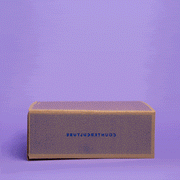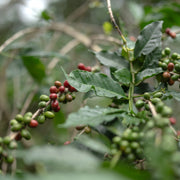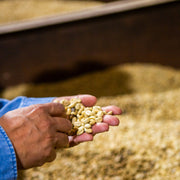In a previous blog post, we explored the differences between washed and natural processed coffees. While there are many variations between these two processing methods, today we'll keep it simple and dive into a third method called honey processing—also known as pulp natural processing.
In a previous blog post, we explored the differences between washed and natural processed coffees. While there are many variations between these two processing methods, today we'll keep it simple and dive into a third method called honey processing—also known as pulp natural processing.
How the Honey Process Works
After coffee cherries are picked, the first step in the honey process is removing the fruit. This is done with a depulper—a machine that squeezes the seeds (what we eventually roast and brew) from the cherries between two plates.
Depulpers can be calibrated to leave more or less mucilage—the sticky, sugary coating that clings to the seeds—depending on the flavor or fermentation goals.

In a traditional washed process, the next steps would involve fermentation and washing to remove all remaining mucilage. But in honey processing, the mucilage is left on the seed to dry naturally.
As the mucilage ferments—especially in warm environments—it often turns a golden color, which is where the name honey process comes from. Depending on the amount of mucilage and drying techniques used, the final coffee can range in color and flavor intensity.
Drying and Milling
Once depulped, the coffee is spread out on patios or raised beds to dry with the mucilage still attached. Fermentation continues during the drying stage until the coffee reaches the right moisture level.

The drying time can vary greatly—from just a few days to a couple of weeks—depending on the climate and the amount of mucilage remaining on the seeds.
After drying, the coffee is transported to a milling facility, where the parchment (a papery, protective layer) is removed. The coffee is then sorted for quality and bagged for export.
Why Choose the Honey Process?
One major benefit of the honey process is its low water usage. Unlike washed processing, which relies heavily on clean water for fermentation and rinsing, the honey process often requires little to no additional water.

In countries where water is scarce, the honey (and natural sundried) process can be a more sustainable and practical choice for farmers and producers.
What Does a Honey-Processed Coffee Taste Like?
Honey-processed coffees can showcase a wide range of flavors. Typically, you’ll find amplified fruit notes—though not as strong as those found in natural sundried coffees—along with sweeter, nuttier flavors. These characteristics develop because the sugary mucilage remains on the seed for longer than in washed process coffees.
However, just like any other processing method, honey process coffees are sensitive. Over- or under-fermentation can occasionally lead to less-than-ideal flavors in the cup, making careful management crucial.
At Counter Culture, we occasionally offer honey-processed coffee when we find a standout lot. However, it remains a less common processing method among the coffees we purchase.







